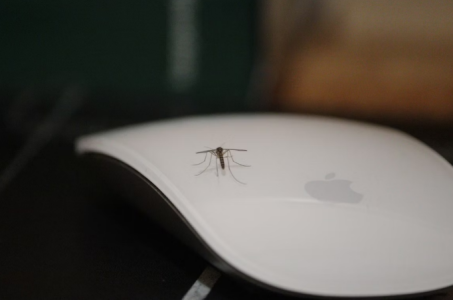Rare virus expands to new regions, prompting global health warning
- Replies 0
A concerning trend appears to be quietly unfolding across multiple parts of the world, drawing increasing attention from experts who are trained to spot early signs of something bigger.
Health officials are sounding the alarm as a virus that was once considered rare in many places seems to be gaining strength and showing up in areas where it wasn’t previously a threat.
With patterns that bear an unsettling resemblance to the early days of past global health events, the broader medical community is now keeping a close and cautious watch on how things develop.
The growing possibility of swift transmission is leading to urgent conversations about what steps need to be taken now in terms of prevention, monitoring, and long-term preparedness.
The chikungunya virus is transmitted by mosquitoes and can lead to debilitating joint pain, fever, and in some cases, life-threatening complications.
The World Health Organization confirmed a surge in cases in 2025, with outbreaks across the Indian Ocean islands of La Reunion, Mayotte, and Mauritius.
Officials report approximately 220,000 infections and at least 80 deaths in just the first half of the year.
One WHO medical officer noted, “We are seeing history repeating itself,” referencing the virus's prior explosive spread in 2004.

Europe is now facing localized transmission for the first time in several areas, including southern France and parts of Italy.
Twelve of France’s 800 cases since May were contracted without travel, suggesting infected mosquitoes are now active locally.
Italy confirmed two infections acquired within its own borders, raising further concerns about vector migration.
Climate conditions and changing mosquito behavior appear to be accelerating the spread of chikungunya into new climates.
Also read: The alarming new virus found in Alabama–Could it be the next global outbreak?
Beyond Europe, the virus is moving across the Pacific, triggering an official outbreak declaration in the Cook Islands and increased activity in Samoa, Tonga, Fiji, and French Polynesia.
Australia issued travel advisories in June after cases were linked to popular holiday destinations. In the United States, 24 cases were reported by mid-July, all in travelers returning from high-risk areas.
The CDC has elevated alerts for countries including Brazil, India, Nigeria, and the Philippines. The chikungunya virus is not spread through casual contact but through bites from infected Aedes mosquitoes.
Once bitten, a person may experience symptoms such as high fever, rashes, and intense joint and muscle pain.
While most cases resolve within a few weeks, some individuals—particularly the elderly, newborns, and those with preexisting health issues—may suffer long-term effects. In rare cases, the disease can lead to neurological, cardiac, or vision-related complications.
Infections can also result in significant health deterioration over time, with chronic joint pain persisting for months or years.
Researchers have linked chikungunya infections to a higher risk of developing other conditions like Type 2 diabetes or heart disease in susceptible individuals.
While not typically fatal, the virus can severely impair quality of life and long-term mobility. Pregnant women are at risk of transmitting the virus to newborns during childbirth, which may cause severe illness in infants.
Also read: Health alert: Virus tied to birth defects and paralysis resurfaces in top travel spot
There is no antiviral cure for chikungunya, and treatment focuses primarily on symptom management through rest, fluids, and over-the-counter medication. In late 2023, the FDA approved a vaccine called IXCHIQ for adults at higher risk of exposure, offering some hope for prevention.
However, widespread access to the vaccine remains limited, particularly in lower-income regions. Health experts continue to urge mosquito control, personal protection measures, and public awareness as the primary tools to contain the virus.
Read next: This once-wiped-out virus is making a dangerous comeback—and health officials say the risk is real

Should governments act now to expand vaccine access before chikungunya becomes a broader crisis? What measures would you support to reduce mosquito-borne disease risks in your region? We’d like to hear how your community is preparing—or not—for threats like this. Share your thoughts in the comments below.
Health officials are sounding the alarm as a virus that was once considered rare in many places seems to be gaining strength and showing up in areas where it wasn’t previously a threat.
With patterns that bear an unsettling resemblance to the early days of past global health events, the broader medical community is now keeping a close and cautious watch on how things develop.
The growing possibility of swift transmission is leading to urgent conversations about what steps need to be taken now in terms of prevention, monitoring, and long-term preparedness.
The chikungunya virus is transmitted by mosquitoes and can lead to debilitating joint pain, fever, and in some cases, life-threatening complications.
The World Health Organization confirmed a surge in cases in 2025, with outbreaks across the Indian Ocean islands of La Reunion, Mayotte, and Mauritius.
Officials report approximately 220,000 infections and at least 80 deaths in just the first half of the year.
One WHO medical officer noted, “We are seeing history repeating itself,” referencing the virus's prior explosive spread in 2004.

Rare virus expands to new regions, prompting global health warning. Image source: Luke Madziwa / Unsplash
Europe is now facing localized transmission for the first time in several areas, including southern France and parts of Italy.
Twelve of France’s 800 cases since May were contracted without travel, suggesting infected mosquitoes are now active locally.
Italy confirmed two infections acquired within its own borders, raising further concerns about vector migration.
Climate conditions and changing mosquito behavior appear to be accelerating the spread of chikungunya into new climates.
Also read: The alarming new virus found in Alabama–Could it be the next global outbreak?
Beyond Europe, the virus is moving across the Pacific, triggering an official outbreak declaration in the Cook Islands and increased activity in Samoa, Tonga, Fiji, and French Polynesia.
Australia issued travel advisories in June after cases were linked to popular holiday destinations. In the United States, 24 cases were reported by mid-July, all in travelers returning from high-risk areas.
The CDC has elevated alerts for countries including Brazil, India, Nigeria, and the Philippines. The chikungunya virus is not spread through casual contact but through bites from infected Aedes mosquitoes.
Once bitten, a person may experience symptoms such as high fever, rashes, and intense joint and muscle pain.
While most cases resolve within a few weeks, some individuals—particularly the elderly, newborns, and those with preexisting health issues—may suffer long-term effects. In rare cases, the disease can lead to neurological, cardiac, or vision-related complications.
Infections can also result in significant health deterioration over time, with chronic joint pain persisting for months or years.
Researchers have linked chikungunya infections to a higher risk of developing other conditions like Type 2 diabetes or heart disease in susceptible individuals.
While not typically fatal, the virus can severely impair quality of life and long-term mobility. Pregnant women are at risk of transmitting the virus to newborns during childbirth, which may cause severe illness in infants.
Also read: Health alert: Virus tied to birth defects and paralysis resurfaces in top travel spot
There is no antiviral cure for chikungunya, and treatment focuses primarily on symptom management through rest, fluids, and over-the-counter medication. In late 2023, the FDA approved a vaccine called IXCHIQ for adults at higher risk of exposure, offering some hope for prevention.
However, widespread access to the vaccine remains limited, particularly in lower-income regions. Health experts continue to urge mosquito control, personal protection measures, and public awareness as the primary tools to contain the virus.
Read next: This once-wiped-out virus is making a dangerous comeback—and health officials say the risk is real
Key Takeaways
- Chikungunya is spreading beyond tropical regions due to environmental changes and mosquito adaptation.
- The virus causes fever, joint pain, and sometimes long-term complications, especially in older adults and newborns.
- New local transmissions in Europe mark a shift in the virus’s global reach and persistence.
- The FDA-approved vaccine exists, but availability remains limited, leaving mosquito prevention as the main defense.






